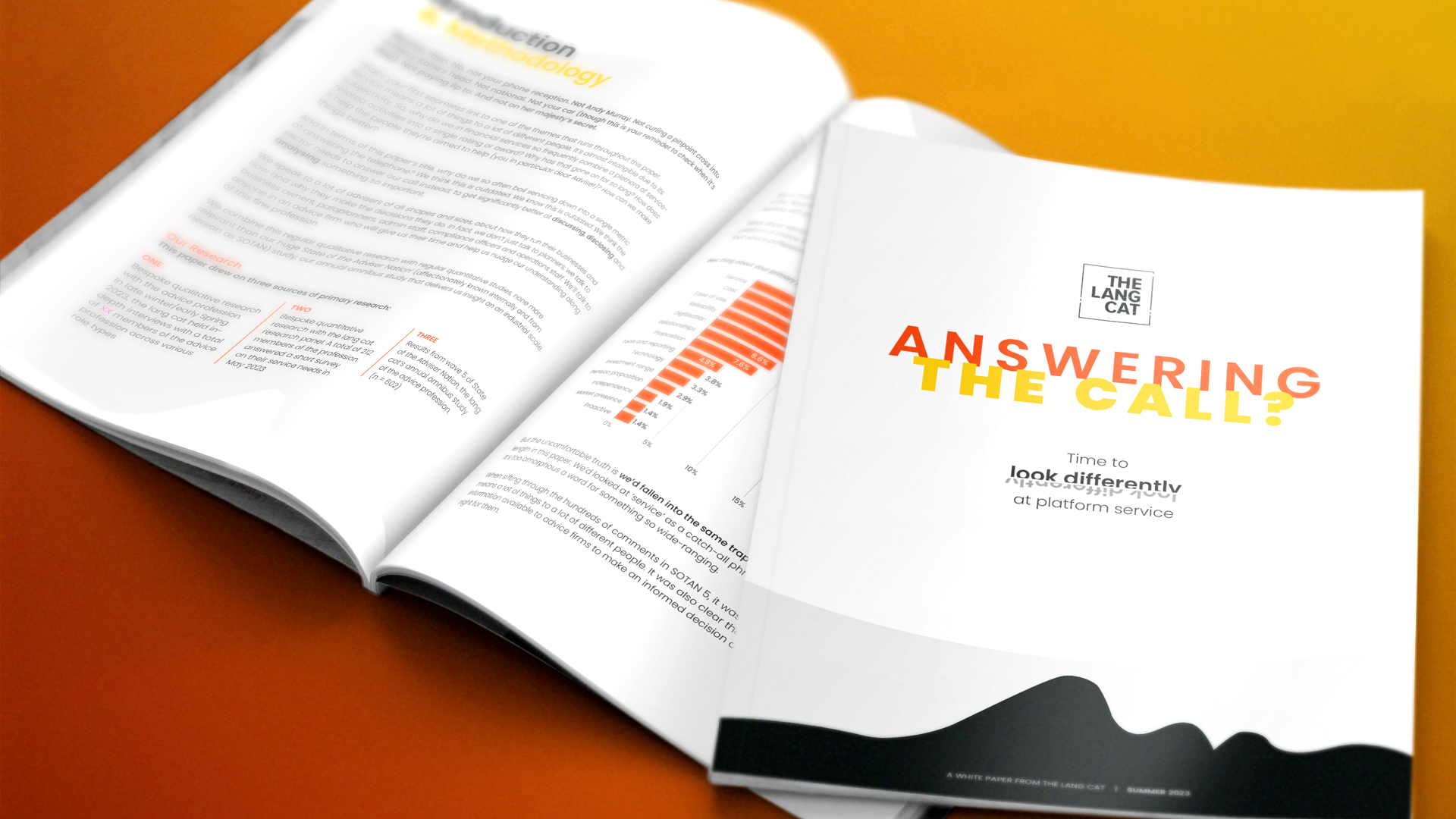So you’ve already heard from Mike, the brains and most trusted narrator of our annual advice gap report. And if you were at the launch, you would have heard from the wonderful Steve discussing some of the key results. But now, dear reader, it’s time you heard from someone you rarely hear from, me!
So, a quick introduction. Hi, I’m Kate, research analyst here at the lang cat. I am usually the one behind the curtain – designing surveys, diving headfirst into spreadsheets, and occasionally mumbling lovingly at a complex pivot table. Not quite sure who decided it was a good idea to drag me away from Excel and into Word to write this update, but here we are.
Last week, they did one better and actually took me away from my desk entirely, bringing me along to London for the Advice Gap launch. And I must say, what a wonderful trip it was. It was a lovely experience to see everyone who attended engaging with the results, having conversations about what’s changed and exploring what might happen in the future.
This is the third year I’ve worked on this paper, and I can honestly say it’s one of my favourite projects at the lang cat (though don’t tell Steve it’s overtaken State of The Advice Nation in my affections). Not only is it a great piece to bring into our financial world bubble every year, but I find it sparks conversations in my personal life too… in the pub, on a Sunday, with my Dad. I was telling him all about the paper and my upcoming trip, and it brought on an interesting conversation (and many more pints) about advice and how we currently stand on the two different sides, but each of us facing our own issues.
Me? a ‘young’ 30-year-old woman, bombarded with messages about how I should be planning for the future, but still not quite financially set enough to afford traditional advice. My Dad? A 50-something male who’s been receiving advice for many years, but in all honesty, just trusted his adviser to do what’s best not really paying much attention. So, he now finds himself sitting up a little straighter, unsure about whether or not he is receiving the type of advice he needs at this stage in his life, and furthermore if he’s happy with the type of relationship he has with his adviser.
Are we squarely in the advice gap, as defined by the report? Not exactly. But the results from this research can also be used to highlight other areas in the industry to keep this moving in the right direction.
So, I need a little guidance, right? There are other options available to us that can’t quite receive the traditional advice. However, I am a bit ashamed to say that, although I am technically aware of the free advice offered by the government, compared to the 79% of women in my age range who are not, I have not yet taken the time to explore it. In my personal opinion, and in line with our results, I would prefer to have an in-person conversation (71% agree) with someone to both increase the trust in the advice I am receiving as well as confidence in my actions. Given this preference, for me and 53% of women aged 25-34, the idea of pay-as-you-go advice is more appealing. It would allow me to continue to focus on my short-term goals while nudging us toward long-term planning, without the commitment or cost of a full planning relationship.
Interestingly, when reflecting on what my Dad has expressed to me, I found he is mirroring a particular little trend of insight we saw in the data. Whilst the majority of male consumers aged 55 and older still continue to find the advice they are receiving helpful (90%), their preference for the type of relationship with their adviser begins to shift with age.
Among those who have paid for advice in the past two years, only 7% of individuals aged 45-54 want an ongoing relationship that involves a continuous charge to the adviser; in contrast, this preference significantly increases to 51% among those aged 55 and older. This establishes that as men are nearing retirement, half of them are moving away from just the transactional relationship they once were happy with and leaning towards wanting a more personalised or holistic approach. I reckon the sector should take notice of this, not only to check in with their clients regarding their financial goals but also to determine whether they are meeting their clients’ relationship needs.
So what am I saying with all this? Naturally, the Advice Gap report is a must read – not just to remind ourselves that, yes, the gap is still there, but also to dive into all the little nuances that might highlight something you didn’t notice before.
Your music choice of the week is in preparation for one of the concerts I am going to this month. Now I am not going to lie, I am also going to TRNSMT next Friday (cue mixed reactions), mainly to see 50 Cent and relive my teenage years. BUT I am most excited to head down south to see Imagine Dragons – so here is one of my favs, an oldie but a goodie: Whatever It Takes
So, that’s me, your behind-the-scenes analyst, momentarily stepping into the spotlight. I’ll be back with my beloved spreadsheets soon enough. But until then, I hope this gave you a fresh angle on the data—and maybe even a nudge to start a few conversations of your own.
Kate





